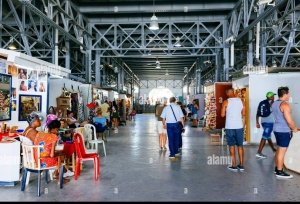please click here:
https://www.keychainventure.com/higer.html
Introduction
In a world ever more attuned to sustainability, efficiency and connectivity, the bus industry sits at a fascinating intersection of urban mobility, clean energy and global trade. One company that exemplifies this shift is HIGER Bus Company Limited. Founded in China and steadily expanding across continents, HIGER has grown from a domestic bus‑maker into a global supplier of coaches, city‑buses and new‑energy solutions. In this article we'll explore HIGER's journey, its product portfolio, its competitive positioning, and its future prospects. We'll also contrast it with peer manufacturers to understand what gives HIGER its edge.
Company Origins and Evolution
HIGER Bus came into being at the end of 1998, based in Suzhou, Jiangsu province, China. The company quickly built a large manufacturing base and by its own figures had constructed a modern facility covering around 750 000 m².Over the years it secured certifications, expanded its export footprint, and developed a range of bus and coach models covering city transit, intercity routes and new‑energy formats.
What makes the story of HIGER interesting is this combination of domestic scale plus international ambition. The “take‑you‑higher” brand promise reflects its push not only to produce buses, but to “upgrade” the mobility experience, especially in emerging markets.
Product Portfolio and Core Capabilities
HIGER's product span can be summarized by several major series: coaches (for tourism/intercity), city‑buses, new‑energy vehicles (electric/hybrid), school buses, BRT (bus‑rapid‑transit) vehicles and vans/special‑vehicles.
Key capabilities include
-
A large manufacturing base and annual production capacity of tens of thousands of buses.
-
A strong export orientation: HIGER reports exports to over 150 countries and regions.
-
Partnerships and product variants: for example, HIGER and Scania collaborated on luxury coach models for export markets.
-
Increasing focus on new‑energy vehicles and smart mobility features (connectivity, fleet management).
Market Positioning and Competitive Landscape
HIGER occupies a distinctive position. On one hand it competes with domestic Chinese bus‑builders; on the other hand it aims to compete globally with longstanding OEMs in Europe, Asia and the Americas. According to available data HIGER has manufacturing capacity for 35 000 large and medium buses per year.
Below is a simplified comparison table contrasting HIGER with two hypothetical peers (one domestic, one international) to illustrate differentiators.
| Manufacturer | Origin & Base | Export Footprint | Specialty / Strength | Key Differentiator |
|---|---|---|---|---|
| HIGER (China) | Suzhou, China, founded 1998 | Over 150 countries/regions globally | Wide model range (coach, city, new‑energy), export focus | Strong export infrastructure + new‑energy push |
| Domestic Peer A | China, older legacy bus‑maker | Moderate exports | Strong in domestic market, less in new‑energy exports | Large domestic presence, less global branding |
| International Peer B | Europe, long heritage | Global but high cost | Premium coaches, strong brand, high cost structure | Established brand & premium price point |
From this table we see that HIGER's advantage lies in offering global reach, diversified product range, and cost competitiveness (typical of Chinese manufacturing) while stepping into advanced mobility technologies (new‑energy, smart fleet management).
The challenge for HIGER lies in brand perception, competition from global premium manufacturers, and maintaining quality standards at scale. But its upward trajectory suggests it is increasingly capable of closing that gap.
Technological & New‑Energy Focus
In global mobility trends, buses are no longer just metal boxes moving people: the focus is increasingly on sustainability, connectivity, and operational efficiency. HIGER recognises this and promotes new‑energy buses (electric, hybrid) and smart operation systems. For example, the company emphasises its “G‑BOS intelligence operation system” to integrate GPS, fuel consumption, maintenance, remote diagnostics.
This aligns with global shifts: cities aiming to decarbonize their transit fleets, operators demanding lower total cost over lifecycle, and governments sharpening emissions/regulation standards. Because HIGER combines large production volumes with export experience, it is well‑placed to serve markets in Asia, Africa and Latin America where bus fleet replenishment is booming.
Global Expansion and Strategic Markets
HIGER's international penetration is significant. It reports exports to more than 100 or even 150 countries and regions. Some of the strategic geographic moves include Latin America, Africa, Middle East, Eastern Europe. For example, HIGER delivered 450 pure‑electric city buses to Chile as part of its push in South America.
By diversifying geographically, HIGER reduces dependency on one regional market and leverages growth in emerging economies. At the same time, entering mature markets (Europe, North America) may pose higher regulatory, safety and brand‑barrier requirements.
What Sets HIGER Apart: Key Strengths & Risks
Strengths
-
Broad product portfolio enabling it to serve multiple application segments (tourist coach, city bus, new energy bus).
-
Strong volume manufacturing capability and export network.
-
An ability to adapt to new‑energy / smart‑mobility trends, giving it future relevance.
-
Cost competitiveness relative to premium global OEMs.
Risks / Challenges
-
Brand reputation in some markets may lag behind established Western or Japanese OEMs.
-
Quality, safety and regulatory compliance (especially in stringent markets) remain a constant focus.
-
Profit margins may be squeezed by volume focus and cost pressures.
-
Global supply chain disruptions (e.g., in electronics / batteries) may impact new‑energy vehicle roll‑out.
Case Study: HIGER vs. Premium Coach Manufacturer
Consider a scenario: a city transit agency must decide between Bus Manufacturer A (premium European maker) and HIGER for a new fleet of electric city buses.
| Metric | Premium European Maker | HIGER |
|---|---|---|
| Up‑front cost per unit | Higher (premium brand) | |
| Lead time | Moderate | Potentially shorter |
| After‑sales / service network (local) | Strong in mature markets | Stronger in emerging markets, growing in mature |
| Technology maturity | Established systems | Rapid innovation in new‑energy and smart fleet |
| Total Cost of Ownership | Lower for top brands, but higher capital cost | Competitive TCO if service and reliability good |
| Brand / perception | Very strong | Improving, cost competitive |
In markets where budget constraints are tight and new‑energy shift is urgent, HIGER's value proposition can be compelling. In markets where brand, after‑sales and legacy support matter more, the premium maker may hold advantage.
Future Outlook and Trends for HIGER
Looking forward, several macro‑trends favour HIGER: the global push for decarbonisation, urbanisation, development of secondary cities in emerging markets, and the move toward fleet electrification and autonomy. HIGER is aligning with these by expanding new‑energy product lines and global partnerships.
However, success will require maintaining quality, elevating service network globally, sustaining innovation (battery + charger integration, data/telemetry, fleet analytics) and managing regulatory risk in export markets (safety regulations, import tariffs). If HIGER can scale smart‑mobility solutions (not just the hardware) it may transition from bus‑maker to mobility‑solution provider.
Final Thoughts
HIGER Bus represents an interesting case of a Chinese‑origin manufacturer that has leveraged volume manufacturing, export ambition and now technology adaptation to stake a global claim. It is neither purely a low‑cost player nor purely a premium brand but sits in a hybrid niche: providing “good value + advanced features”. For transit agencies, fleet operators or specifiers in emerging markets this makes HIGER a serious candidate. For HIGER, the next chapter will test how well it can scale quality, service and brand trust globally.
Frequently Asked Questions
Q1: What is HIGER Bus Company's foundation year and origin?
A1: HIGER Bus was founded in China in 1998 and is headquartered in Suzhou, Jiangsu province.
Q2: What types of buses and vehicles does HIGER offer?
A2: HIGER offers coaches (tourist/intercity), city buses, new‑energy (electric/hybrid) buses, school buses, BRT vehicles, vans and special‑purpose vehicles.
Q3: How global is HIGER's reach in terms of exports?
A3: HIGER reports having exported to over 150 countries and regions worldwide, covering Asia, Africa, Europe, the Americas and the Middle East.
Q4: What is HIGER's approach to new‑energy and smart mobility?
A4: HIGER has been developing electric and hybrid buses, along with fleet‑management systems (such as the G‑BOS intelligence operation system) that integrate data, diagnostics and remote management.
Q5: What are some competitive advantages and challenges for HIGER?
A5: Advantage: wide product range, export know‑how, cost competitiveness, alignment with new‑energy trends. Challenge: building global brand trust, ensuring high service/support levels, meeting stringent regulatory/safety standards in mature markets.
Article Summary
HIGER Bus Company is a Chinese manufacturer that has evolved from domestic success into a global exporter of coaches, city buses and new‑energy vehicles. With broad product lines, strong export networks and smart mobility focus, HIGER is well positioned for the shift to sustainable transit, though brand trust and after‑sales service globally remain key challenges.






